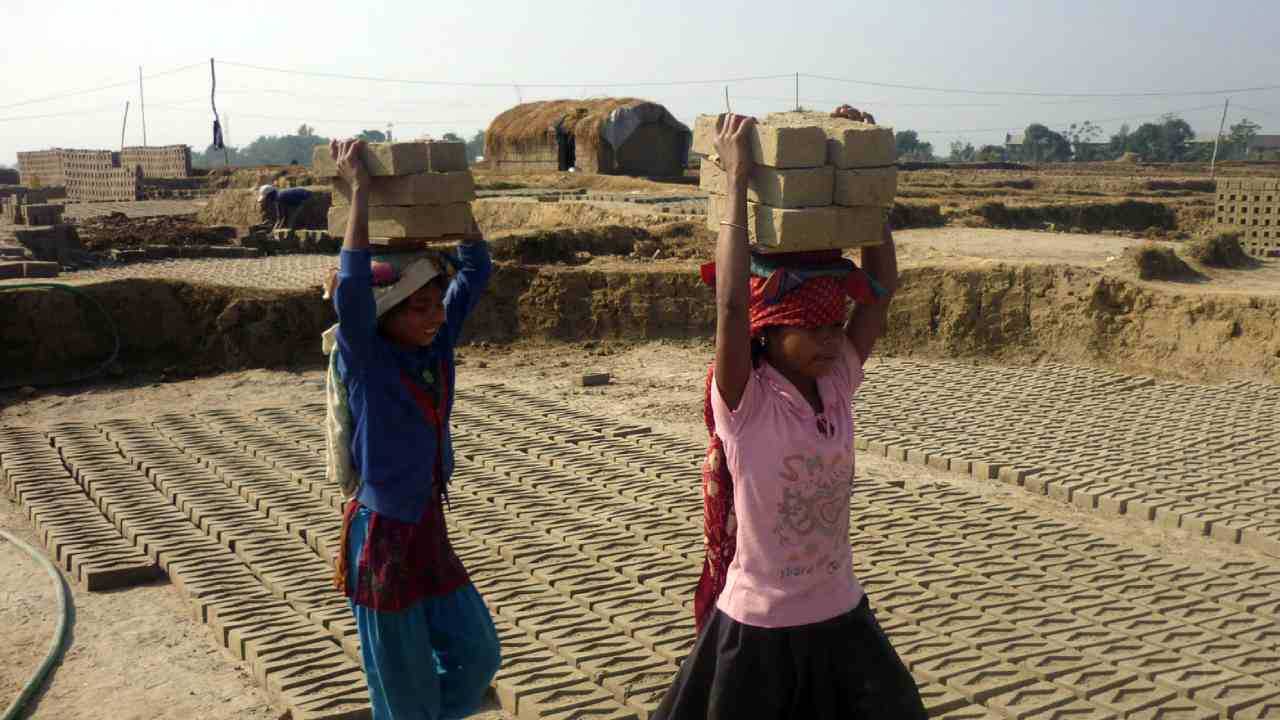According to a ‘discussion paper’ released on January 15 by NITI Aayog, there has been a huge reduction in multi-dimensional poverty in the nine years of the Modi government and a faster decline than under the Manmohan Singh government.
The document has been updated for poverty reduction in the last financial year and seems intended to provide talking points to the ruling BJP’s campaigners in the coming Lok Sabha elections, as NITI Aayog had released estimates of poverty reduction based on the five-yearly National Family Health Survey-5 (NFHS-5) just seven months ago.
According to the discussion paper, the share of the abjectly poor declined by 17.89 percentage points to 11.28% in 2022-23 over a nine-year period. It claims a faster annual reduction in poverty at 10.66% during 2015-16 and 2019-21—the NFHS-5 survey period—than during the previous 10-year period (7.79%) when the Congress-led government was in power.
But the estimates of poverty reduction claimed in the discussion paper do not square with other indicators of well-being and the scale of the government’s measures to relieve distress.
In November 2023, the Cabinet decided to continue providing free foodgrain to 813.5 million people for another five years till the end of December 2029.
If poverty had indeed declined on NITI Aayog’s projected scale, free food grain to 58% of the population would not be necessary.
Economist and activist Jean Dreze had in an article in the Indian Express in May 2023 flagged another issue that pointed to distress in the rural economy. He had written that growth in real or inflation-adjusted wages of farmhands, non-agricultural laborer’s and construction workers was weak over an eight-year period. They had grown annually by 0.9 percent and 0.27 percent for the first two categories between 2014-15 and 2022-23 and had been slightly negative for the third category. Stagnation in real wages impacted poverty reduction, he said.
If wages were rising, workers were likely to be earning more and living better. He was relying on the Labour Bureau’s wage data published by the Reserve Bank of India. Dreze is reputed for his research on development and poverty. As a member of United Progressive Alliance (UPA) Chairperson Sonia Gandhi’s National Advisory Council (NAC) he had helped draft the National Food Security Bill which became law in 2013.
The demand for manual work under the Mahatma Gandhi National Rural Employment Guarantee Scheme (MGNREGS) over the past few years is also not in sync with NITI Aayog’s claims. Person days of work generated under the scheme increased from 234 crore in 2017-18 to 389 crore in 2020-21. Last year it was 293 crore.
The numbers of those tapping into this scheme increased from around 77-78 million persons per year in 2017-18 and 2018-19 to 111.86 million in 2020-21 and 106 million in 2021-22. The expenditure on the programme doubled from about ₹55,000 crore in 2017-18 to ₹111,000 crore in 2020-21—indicating distress. Last year’s outlay was ₹80,000 crore. But social activists have been charging the government with discouraging people from accessing the scheme, as it casts doubt on its claim of all-round prosperity. Funds have not been released for West Bengal for more than a year on grounds of alleged corruption in the scheme. Last year, MGNREGS workers from across the country held a month-long protest in Delhi, demanding ready availability of work and hassle-free, timely payment of wages.
The Periodic Labour Force Surveys also show that the lot of the poor has not improved much. The share of workers engaged in agriculture has increased from 42.5% in 2018-19 to 45.8% in 2022-23. Agriculture contributes about 15% of GDP, so more workers engaged in it means lower income for all. For poverty reduction, it is important to shift people from agriculture to more productive sectors like construction or manufacturing.
The proportion of non-agricultural workers who run their informal proprietary or partnership enterprises has also risen from 68.2% in 2017-18 to 74.3% in 2022-23.
The composition of the multi-dimensional poverty index raises questions about its appropriateness as a measure of poverty. In an earlier piece in Tatsat Chronicle (August 2023), I had said that the index uses a set of proxies for measuring poverty. Unlike monetary measures like daily or monthly consumption expenditure on a basket of essential goods and services, MPI is said to capture both the extent and depth of poverty. It uses 12 parameters to do so. These are grouped under three categories: education, health, and standard of living, each of which has equal, or one-third, weightage.
A household would be educationally deprived, according to the index, if no family member aged 10 or above has completed six years of schooling, and any child of school-going age is not attending school up to Class VIII age.
An undernourished child (under five years), woman (under 49 years) or man (under 54 years); death of a person aged up to 18 years in the preceding five years; or a pregnant woman not getting at least four ante-natal care visits or not assisted during her last childbirth in the preceding five years would render the family deprived health-wise.
There are seven parameters to assess poor standard of living: access to “improved” water and sanitation, use of cow dung patties, coal or biomass for cooking; a shack for a house; lack of assets like radio, TV or phone; and no electricity or a bank account. If a family tots up a score of one-third or more on the above counts, it would be considered as living in poverty.
But the definitions are quite expansive. ‘Improved drinking water source’ means water piped into a dwelling, yard or plot, or water piped to a neighbour’s house, a public tap or standpipe, tubewell or borewell, protected dug well, spring or rainwater, tanker truck, small tank on cart, bottled water or community reverse osmosis (RO) plant. Owing to this definition, 96% of NFHS-5 respondents said they had access to an improved drinking water source.
‘Improved sanitation facility’ has been defined to mean virtually anything other than open-air defecation. It means a toilet with a flush to a drain sewer system, flush to septic tank, flush to pit latrine, flush to don’t know where, ventilated improved pit (VIP) or biogas latrine, pit latrine with slab, and twin pit or composting toilet which is not shared with any other household. This commodious definition allowed 86% of respondents to say they had access to improved sanitation facilities.
But in the absence of information on consumption expenditure, the index can be said to be more a measure of deprivation than a gauge of poverty.
“Poverty is intrinsically an income concept,” Pronab Sen, former chief statistician of India, told me when I spoke to him for the August 2023 article. He said NITI Aayog’s was a deprivation index and not a poverty index.
The World Bank has addressed this issue by including monetary poverty along with lack of education and access to basic infrastructure in its Multidimensional Poverty Measure (MPM). A person is monetarily poor if they earn less than $2.15 a day—the New International Poverty Line as per 2017 purchasing power parity. Monetary poverty, in its index, has a weight of one-third. This is not included in NITI Aayog’s index.
The World Bank published its fifth MPM in April 2023. India does not figure in any of the five surveys because the National Sample Survey Organisation (NSSO) published the last household consumption survey data —which is the basis for estimating monetary poverty—in 2011-12. No official poverty estimates have been released since then. The NSSO survey of consumer expenditure conducted in 2017-18 has not been released reportedly because the results don’t flatter the government. The results of the last round conducted in 2022-23 are awaited.
NITI Aayog’s index mimics the United Nations Development Programme (UNDP)’s Multidimensional Poverty Index (MPI), except that the latter has 10 parameters instead of 12. It does not include bank accounts in standard of living or assisted childbirth or ante-natal care visits under health. Unlike NITI Aayog’s index which excludes old persons, the UNDP index considers a family to be deprived health-wise if any adult under the age of 70 or any child for whom there is nutritional information is undernourished.
Deprivations based on education and health are different from those caused by lack of purchasing power, C. Rangarajan and his colleague in the 2014 Expert Group, S. Mahendra, Dev, wrote in an article in The Hindu in August 2023. Multi-dimensional measures are an add-on, they said, which can complement but not be a substitute for consumption expenditures or incomes.
The NITI Aayog discussion paper suffers from another serious conceptual flaw. It extrapolates pre-Covid NFHS-5 survey data through the two-year period of the pandemic during which a large number of people slipped back into poverty on account of job losses due to lockdowns. Similarly, education of children suffered a setback due to the closure of schools and the poor, especially in the rural areas, did not have access to smartphones or computers to attend online classes. Some of the NFHS-5 survey data is estimation as the survey was stopped in 22 states due to the pandemic.
It’s clear that to conclude there has been massive reduction in poverty, as the NITI Aayog’s discussion paper suggests, based on incomplete data through liner extrapolation is an exercise in headline management.


























